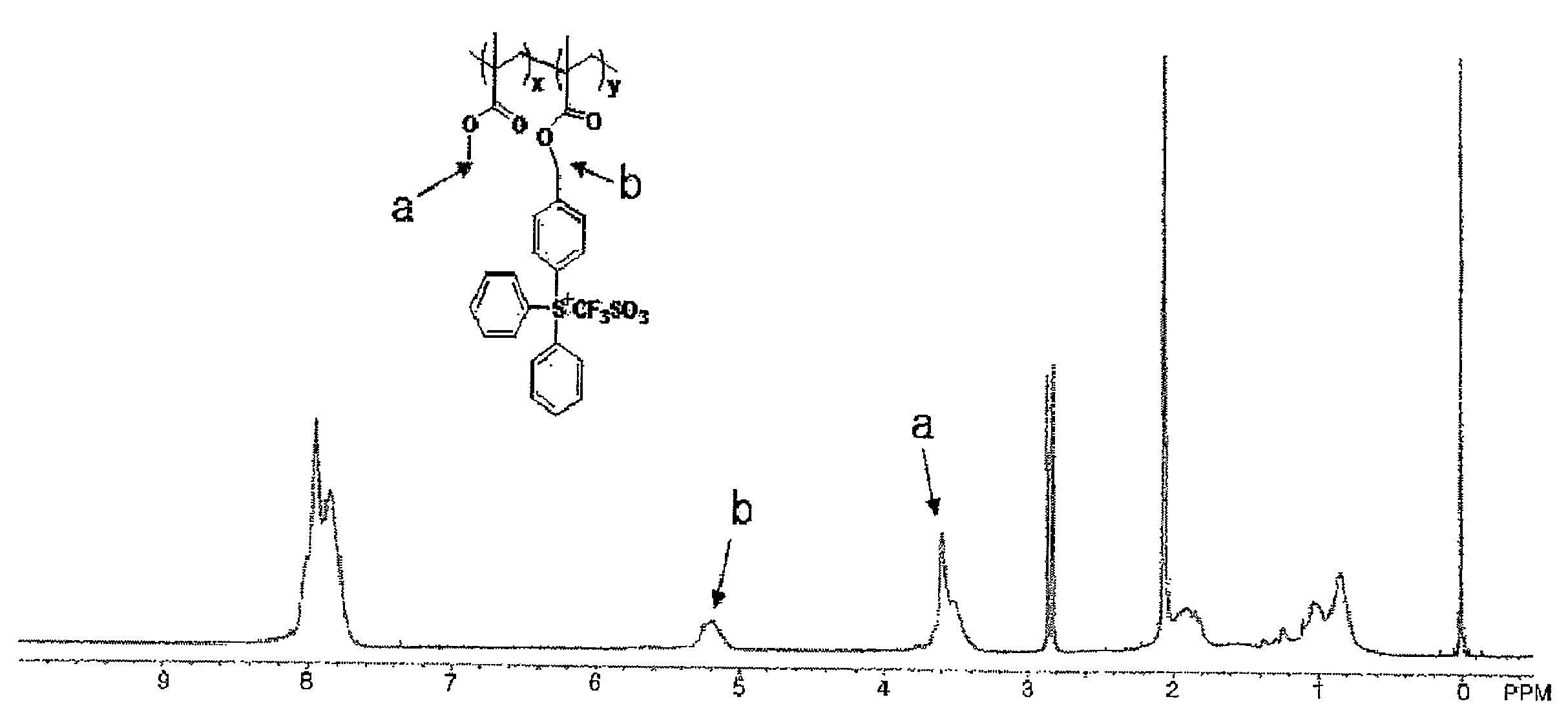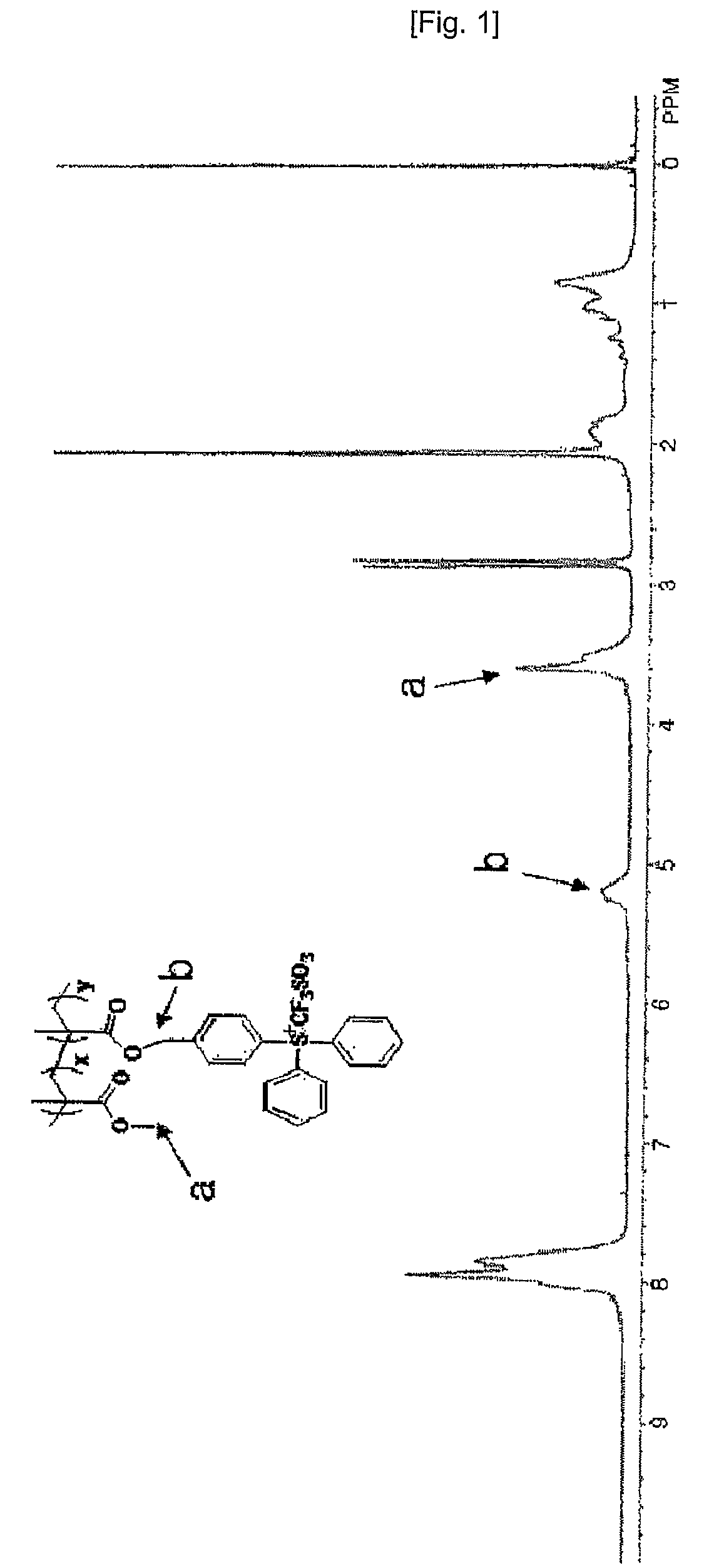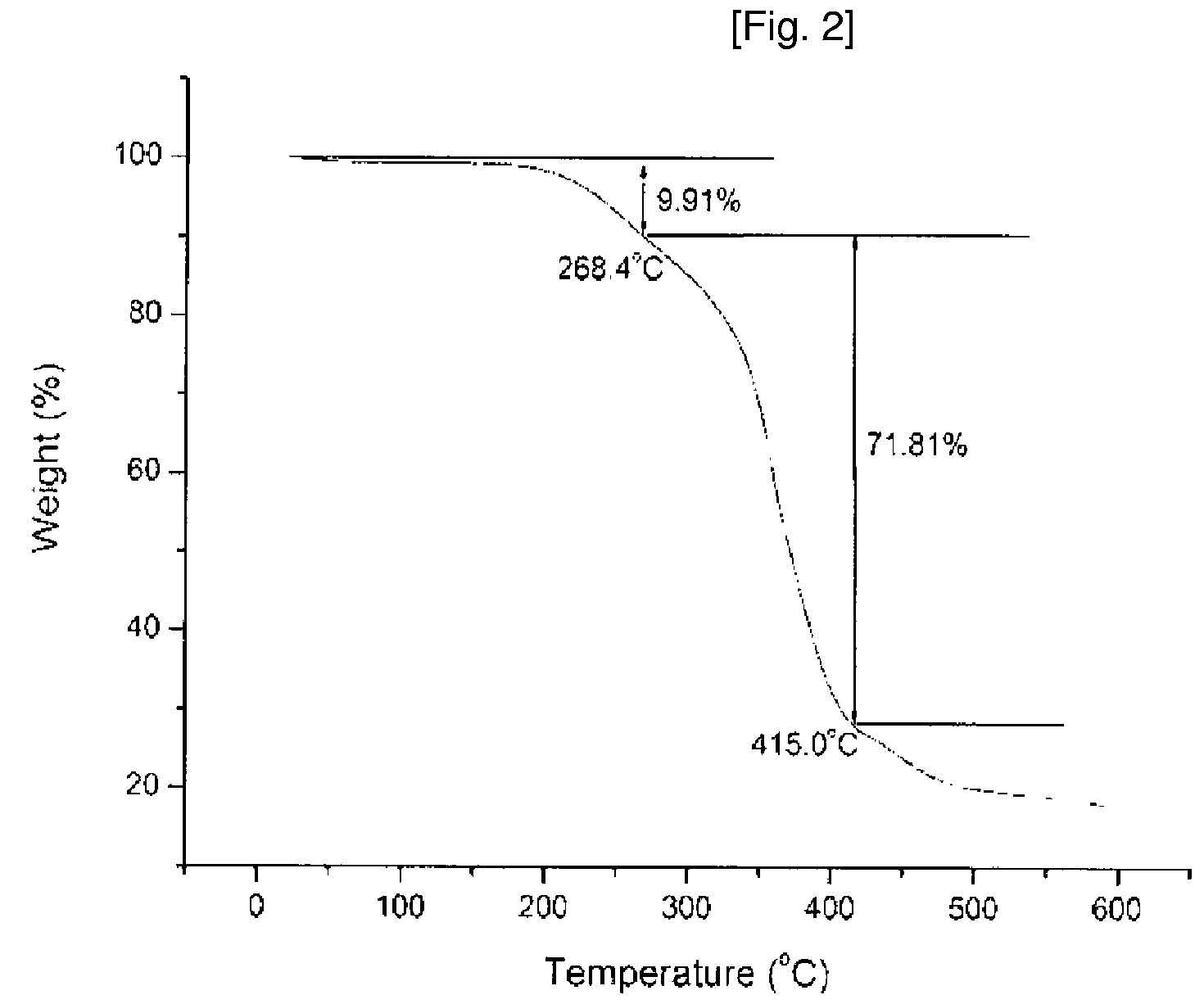Monomer substituted photoacid generator of fluoroalkylsulfon and a polymer thereof
a technology of photoacid generator and monomer, which is applied in the field of new compound with fluoroalkylsulfoniumsubstituted photoacid generating group, can solve the problems of difficult to completely remove the thin film and less soluble in organic solvent, and achieve the effect of improving solubility in organic solvents and superior photopolymerization ability
- Summary
- Abstract
- Description
- Claims
- Application Information
AI Technical Summary
Benefits of technology
Problems solved by technology
Method used
Image
Examples
example 1
Synthesis of Monomer Substituted with a Photoacid Generating Group
[0045]The following scheme 1 illustrates synthesis of 4-methacryloyloxyphenyl diphenylsulfonium trifluorate, in which a novel photoacid generating group is substituted, but the present invention is not limited to this example.
[0046]
(1) Synthesis of 4-methylphenyl diphenylsulfonium trifluorate
[0047]10 g of diphenyl sulfoxide (49.4 mmol) and 5.1 g of toluene (49.4 mmol) were dissolved in 500 mL of dichloromethane. Temperature of reactor containing the solution was adjusted to about −78° C. using an acetone-dry ice bath and 14.8 g of trifluoric anhydride (49.4 mmol) was slowly added dropwise. Then, the solution was stirred at the same temperature for 1 hour and slowly heated to room temperature. After 30 minutes of stirring, the reaction solution washed with saturated sodium bicarbonate solution and then with distilled water. After the solution was dried with anhydrous magnesium sulfate, the solvent was removed by using ...
example 2
Synthesis of Copolymer with a Photoacid Generating Group Introduced at Side Chain
[0056]The following scheme 2 illustrates synthesis of poly(methylmethacrylate-co-4-diphenylsulfoniumtrifluoratebenzylmethacrylate) as an example of a copolymer in which a photoacid generating group is substituted at the side chain, but the present invention is not limited to this example.
[0057]
[0058]1.35 g (13.5 mmol) of methylmethacrylate and 3.45 g (6.75 mmol) of the compound synthesized in Example 1 were dissolved in 300 mL of purified tetrahydrofuran. After adding 22 mg (0.27 mmol) of azobisisobutyronitrile, the mixture was stirred for 24 hours under heat reflux. The reaction solution was slowly poured into a 7:3 mixture solution of isopropyl and n-hexane for precipitation. The precipitate was filtered and dried in vacuum to obtain a compound represented by the formula 2 (yield=50%).
[0059]1H-NMR and TGA analysis results of thus obtained compound are shown in FIG. 1 and FIG. 2.
[0060]According to the ...
example 3
[0061]A copolymer represented by the formula 2 was synthesized in the same manner as in Example 2, except that tert-butylmethacrylate and the compound synthesized in Example 1 were used with 1:1 molar ratio (yield=50%).
[0062]1H-NMR and TGA analysis results of thus obtained compound are shown in FIG. 3 and FIG. 4.
[0063]According to the 1H-NMR analysis, the ratio of x to y was 1:1 and the weight average molecular weight was about 5000.
PUM
| Property | Measurement | Unit |
|---|---|---|
| temperature | aaaaa | aaaaa |
| solubility | aaaaa | aaaaa |
| AFM | aaaaa | aaaaa |
Abstract
Description
Claims
Application Information
 Login to View More
Login to View More - R&D
- Intellectual Property
- Life Sciences
- Materials
- Tech Scout
- Unparalleled Data Quality
- Higher Quality Content
- 60% Fewer Hallucinations
Browse by: Latest US Patents, China's latest patents, Technical Efficacy Thesaurus, Application Domain, Technology Topic, Popular Technical Reports.
© 2025 PatSnap. All rights reserved.Legal|Privacy policy|Modern Slavery Act Transparency Statement|Sitemap|About US| Contact US: help@patsnap.com



